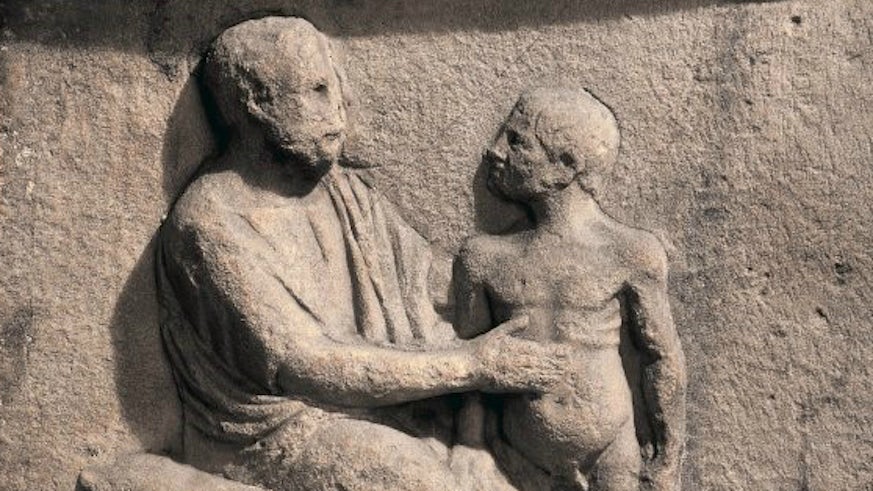Ancient Athens revealed through its inscriptions
5 September 2017

All the stone inscriptions from ancient Athens in UK collections are to be made public in English translations for the first time, thanks to a new project led by Cardiff University.
Created by the inhabitants of the ancient city of Athens and its surrounding region, Attica, stone inscriptions are the most numerous surviving written documents of a city that has made a lasting impact on Western civilization.
Providing evidence of the first major Western democracy in action, and often decorated with relief sculpture, some of the inscriptions reveal in detail decisions made more than two millennia ago by the Athenian citizen Assembly and other bodies. Others are a rich source of information about the lives of ancient Athenians, from financial accounts and leases, to dedications to the gods and funerary monuments.
A millennium of history
Among the inscriptions is the well-known stele of Jason held in the British Museum. The 2nd century AD monument is a dedication to the healing god Asklepios by the doctor, Jason, and his family, and depicts a doctor examining an anxious patient.
Another is a fascinating 2nd century BC decree of the Athenian Assembly in Petworth House honouring a long list of Athenian girls who helped weave the peplos, a garment ritually draped over the ancient wooden statue of Athena on the acropolis.
Attic Inscriptions in UK collections, funded by the Arts and Humanities Research Council, will publish all 250 inscriptions from ancient Athens and Attica held in UK collections, in collaboration with museums across the UK. Spanning nearly a millennium of history from the 6th century BC to 3rd century AD, the inscriptions will be published in open access on the website Attic Inscriptions Online created by, Dr Stephen Lambert of Cardiff University’s School of History, Archaeology and Religion.
Most of the Attic inscriptions in the UK are housed in the British Museum in London, but numerous smaller collections, such as those at the Fitzwilliam Museum in Cambridge, the Ashmolean Museum in Oxford, and in several country houses, such as Petworth, will also feature in the project, as well as those at the British School at Athens.
The four-year £0.5m project will also produce new materials designed to enhance use of these inscriptions in teaching at secondary level, both virtually and via visits to the collections themselves.
Leading the UK project team, inscriptions expert Dr Stephen Lambert said: “The last major edition of the Attic inscriptions in the British Museum appeared in 1874...”
“It is high time for a new, modern and accessible publication of these and the other Attic inscriptions in UK collections.”
“We plan to publish them online in a series of 17 papers, each covering an individual collection or, for the British Museum, category of inscriptions. Based on the most up-to-date scholarly bibliography, supplemented by fresh autopsy of the stones, and supported by photographs, the papers will include ancient Greek texts, translations and commentaries on each inscription. The scholarly papers will be linked to translations on Attic Inscriptions Online, with notes aimed at school and university students and museum visitors.”
Dr Polly Low and Dr Peter Liddel of Manchester University, who are collaborating on the project, added: “We are excited that the project will not only benefit scholars worldwide, but will make these fascinating insights into the Classical world more accessible and engaging for school and University students and the wider public visiting our great UK museums.”
Share this story
Learn more about our postgraduate research programmes

